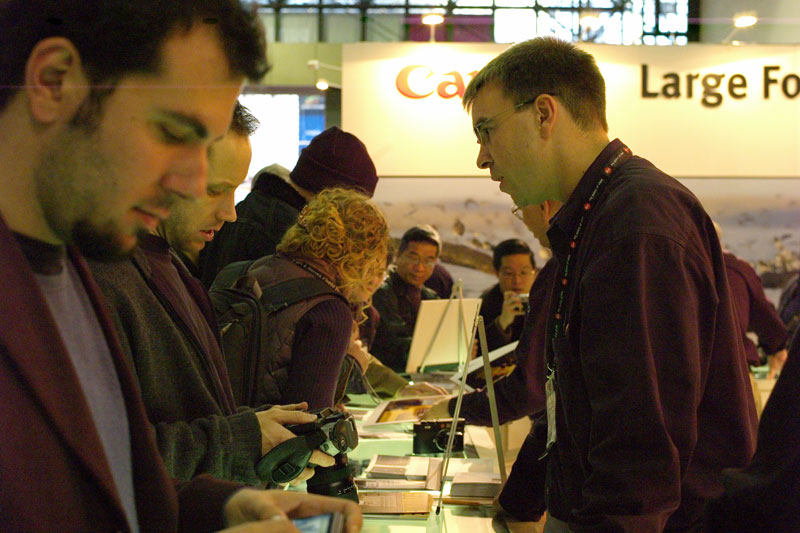Apologies to you Jono - grovel, grovel

. I don't understand it, though - must be my age.
Basically, the light rays from the back of the M lenses (wide angles anyway) are hitting the sensor at a strong angles. If you are familiar with lighting, digital sensors are kind of like grid spots -- light passes through them, but only straight on. Film does not behave this way -- the light can hit it from any angle and it more or less does fine.
The problem with the Leica lenses on digital sensors was this, along with the added problem of the sensor cover glass. The thicker the filter on the cover glass, the more glass the light traveled through (remember, it's going through on an angle, not just right through like on an SLR, so with a .5mm cover glass on an SLR, the light is passing through .5mm of glass, where on a leica with .5mm of cover glass, it might travel through .5mm on center, but 1mm at the edges.). Basically, Leica had a choice -- mushy corners or a thin IR filter. They chose a thin IR filter, but it is clear they greatly underestimated the effect this would have on daily use. Then they had to back pedal and give everyone free filters etc etc.
I am still shocked this happened though. I remember going to Photo Plus in NYC right when it was released. The problems were SO obvious.
This was the first photo I took with it:
It had it all...nasty IR contamination, a lot of noise and banding. P.S. There was not a purple shirt in sight there...everyone was wearing black. They have come a long way though, and the M8 is now a great camera when used within its limits (with IR filters and only up to 640, maybe 1250 for black and white).
Anyway, sorry that was a long digression!


